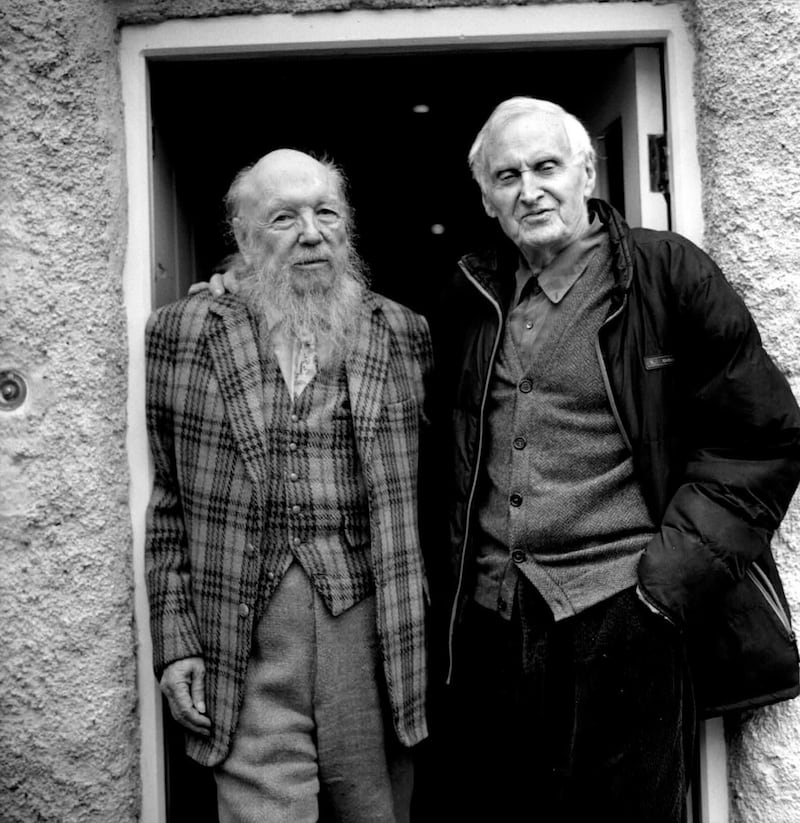Francis Bacon was a man whom I both knew and did not know. There was a reserve in him that discouraged familiarity, and he was happier in the company of photographers, terrified of writers and biographers, and he had more reason than most.
Born in Dublin in 1909, certainly Irish by birth, if not by blood, he had the Irish love for gambling, drinking and perpetual desire to be somewhere else. I first met Bacon outside Marlborough Magistrates Court in London in 1971. The Daily Telegraph published a story, Irish Artist on Drugs Charge. He was acquitted. In his defence, he told the magistrate that he could not have smoked the cannabis found in his house because he was asthmatic.
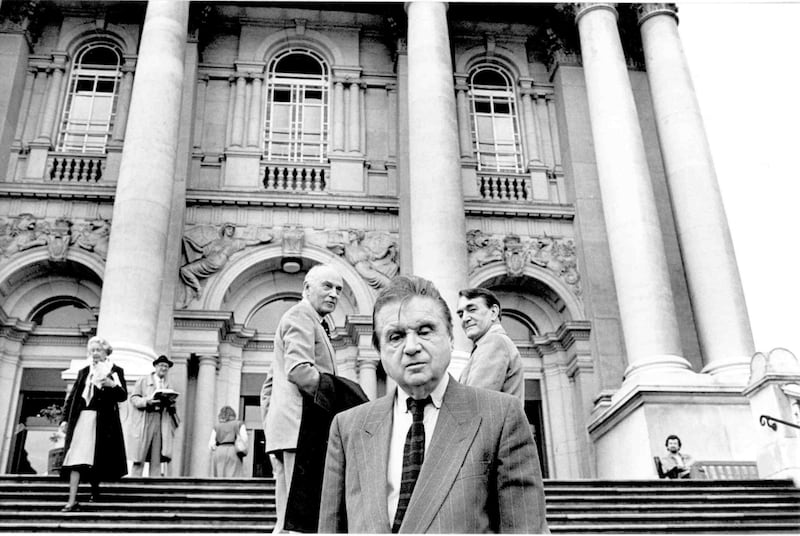
Some months after the case I was drinking in the French House, then called the York Minister, in Dean Street, Soho, with my friend the writer Stan Gebler Davies and Garech Browne, who was one of Ireland’s most colourful and influential cultural figures, a Guinness heir and custodian of the exquisite house Luggala in Co Wicklow. Garech loved Soho and was a good friend of Gaston Berlemont, proprietor of the French House. Gaston saw us all go through the many ups and downs that are part of the precarious structure of the artistic life and was always generous. He would change a cheque for me without a cheque guarantee card. Those little problems did not concern Garech, of course.
Bacon rejected interpretation of his work. 'I am a direct and simple painter,' he would say over the rim of the ever-present glass of champagne
After drinks at the French, Garech invited us to join him at the Colony Room where I met Muriel Belcher and her barman Ian Board for the first time. Muriel knew Garech was a friend of Bacon. It was champagne for the rest of the evening. She was famous for the foul-mouthed greetings she gave to visitors, aided and abetted by Ian Board shouting “Hello C*ntie”.
The small room on the first floor was full of bright young things, most I suspected waiting for the appearance of Bacon who could be affable and abusive. Muriel died in 1978. The club was kept going by Board and, after his death in 1994, by Michael Wojas, the final proprietor who passed away in 2010. I photographed him holding the famous Colony sign. Michael would joke, “I’m the proprietor, the bar manager, lavatory attendant, psychiatric counsellor, odd job man and accountant.” Vodka had taken its toll on his liver.
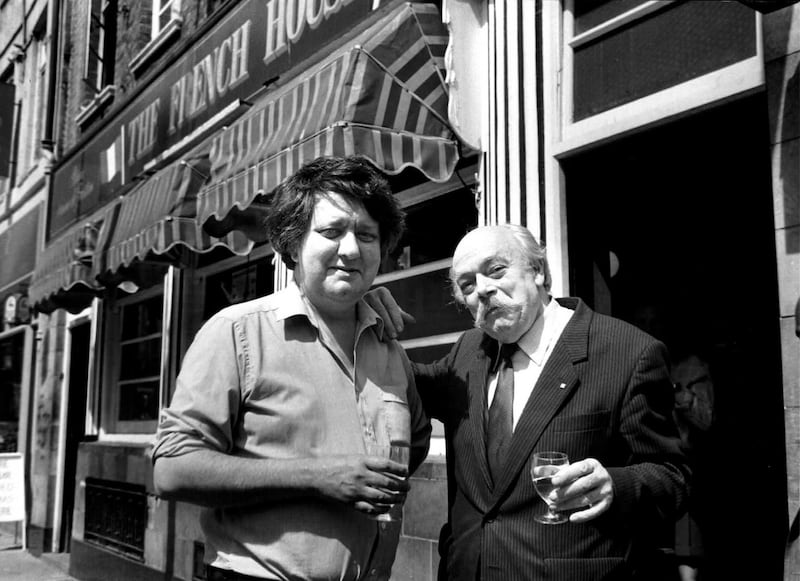
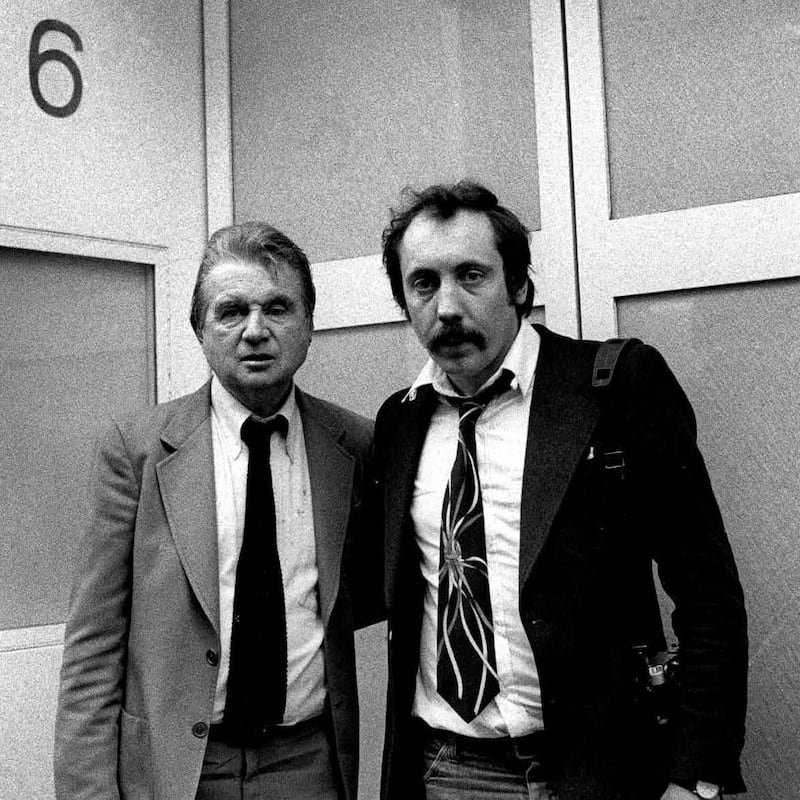
Bacon founded the Colony Room with Muriel, who he adored and who was the subject of many of his paintings. Famously Bacon rejected interpretation of his work. “I am a direct and simple painter,” he would say over the rim of the ever-present glass of champagne. I learned most about Soho from that legendary bar above a trattoria in Dean Street, which opened six days a week at 3pm and had been in business since 1948. I would meet friends there like the photographer Harry Diamond; John Heath-Stubbs, friend of Dylan Thomas; and John Moynihan, son of the distinguished painter Rodrigo Moynihan.
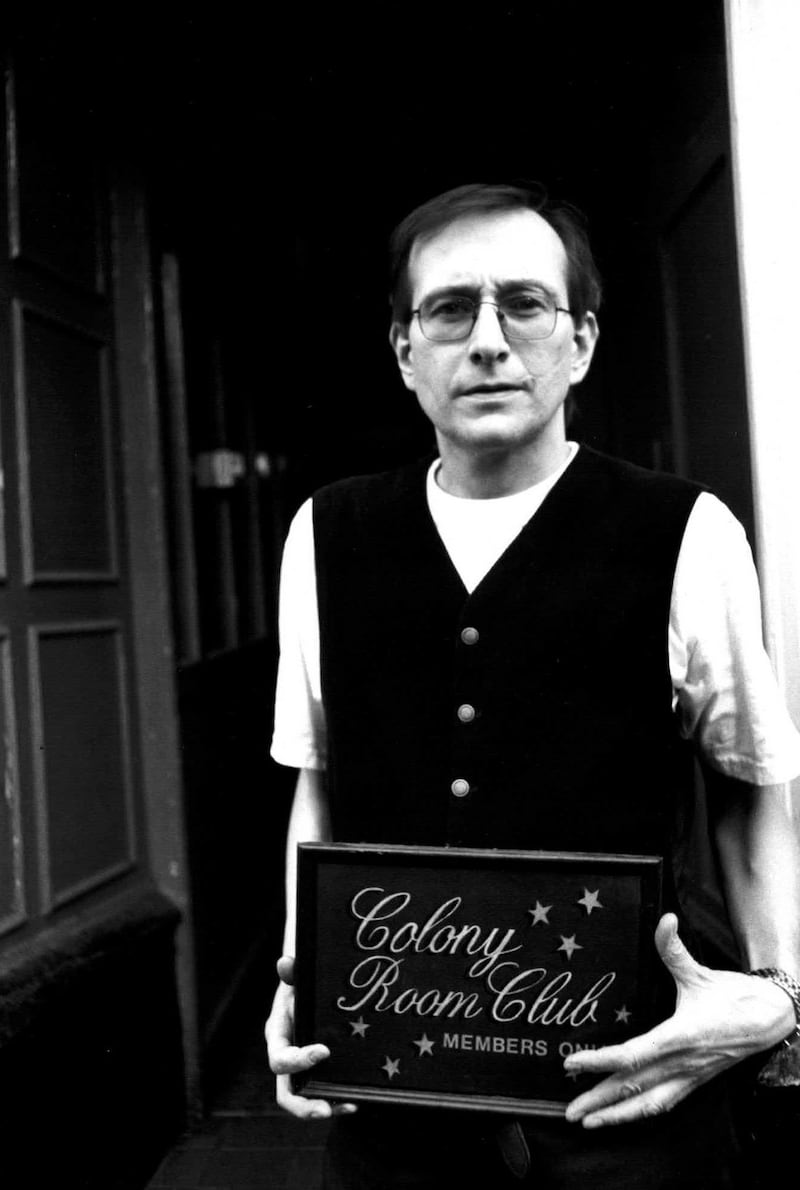
John wrote features and diary items for the Evening Standard. His parents lived in Old Church Street, Chelsea, which became a haven for Bacon and fellow artists Lucian Freud and John Minton. I remember him telling me that Bacon would bounce him on his knee as a child. John went on to become an outstanding football writer, notably for the Daily Telegraph, settling into his true metier, happier sitting in the press box at Chelsea Football Club than a bar stool in the Colony Room or the French. He also helped me become a member of the Chelsea Arts Club during the 1970s often in the company of Francis Bacon.
The French put on a retrospective show of his work at the Grand Palais. This is the kind of consecration that Bacon was accorded in a city that gave birth to photography
One of my greatest regrets was that I never got to meet John Deakin, Bacon’s photographer, who worked for Vogue on and off from 1948 to 1954 after which time he became unemployable, known around Soho as “that little bastard”. He died in 1972 but has now achieved cult status with exhibitions at the Victoria and Albert Museum and the National Portrait Gallery. Deakin lived in Paris like Bacon and was a fan of Eugène Atget, who photographed Paris in the early 1900s. Bacon told me that Deakin was the best portrait photographer since Nadar and certainly he must take credit for elevating those Deakin shots of himself stripped to the waist, holding two sides of beef like angel wings, taken in the butcher’s shop in Old Compton Street. Those paint-splattered gelatine black and white prints found in Bacon’s studio have become precious documents of a time.
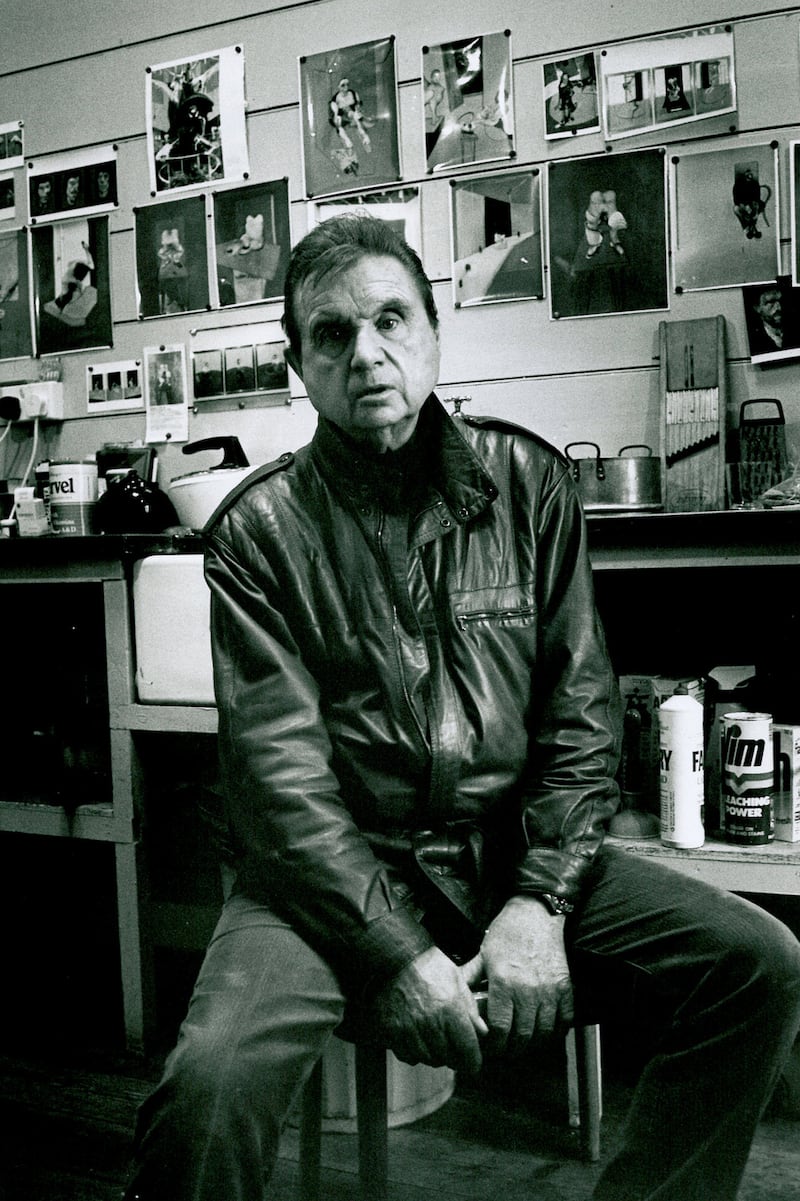
Over the next 20 years, I would see and photograph him on numerous occasions, in London and at his invitation in Paris for his show at the Claude Bernard Gallery on the Rue des Beaux Arts in 1977, very close to the hotel where Oscar Wilde lay dying in 1900.
I have been brooding over Bacon's art since I first saw it on the wall of the Tate Gallery, London, over 50 years ago. It's hard to describe the impact
Some six years earlier, the French did him the great honour of putting on a retrospective show of his work at the Grand Palais. This is the kind of consecration that Bacon was accorded in a city that gave birth to photography in 1839 when Louis Daguerre shouted from his balcony, “I have seized the light, I have arrested its flight.” Bacon loved Paris since his first visit in 1927 when he saw a show of paintings by Picasso, which triggered in him the motivation to paint.
Like others who have seen Bacon’s paintings, you become fascinated or repelled or both by their power and effect on the emotions. I have been brooding over Bacon’s art since I first saw it on the wall of the Tate Gallery, London over 50 years ago. It’s hard to describe the impact. Three Studies for Figures at the Base of a Crucifixion, 1944. The figures isolated in an empty space were nightmarish freaks, half-human, half-beast with necks like twisted snakes expressing the horrors of life that Bacon created not to amuse or inspire but to disturb and provoke.
Valerie Beston from the Marlborough Fine Art Gallery, who Bacon trusted and depended on to make judgment on who he should and should not see, arranged for me to photograph the artist in his studio home in Reece Mews, South Kensington, in 1984. I knocked, Francis looked out one of the windows signalling he would be right down. It was important for me to photograph him in his home. I knew that photography was one of his primary interests and the vital source of inspiration for his paintings, particularly Eadweard Muybridge’s moving images of humans and animals in motion. Muybridge along with Deakin’s photographs are the most ubiquitous presence in his paintings.
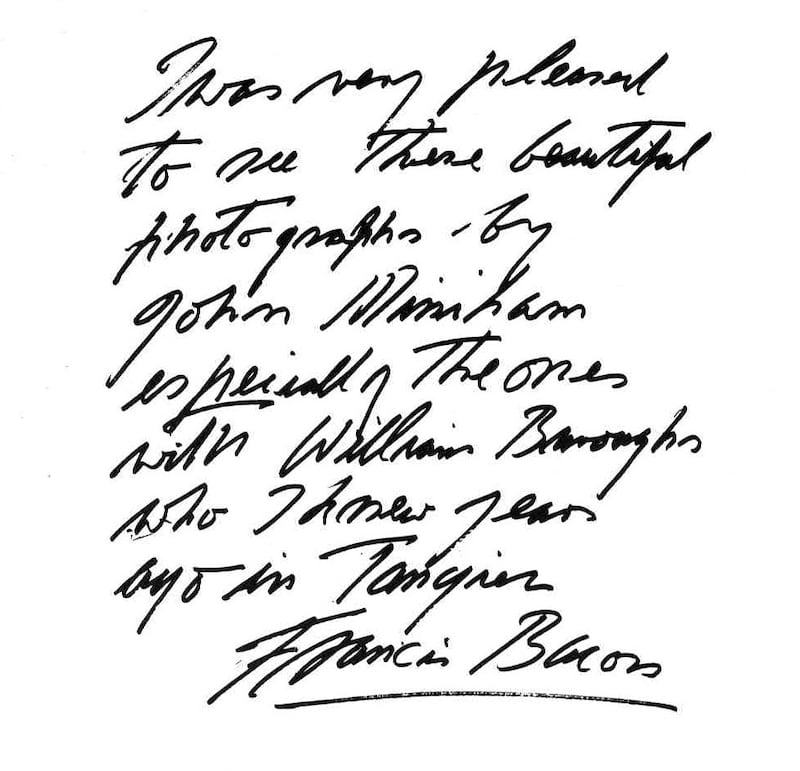
After navigating the narrow steps with the help of a rope banister, I was on the first floor, his studio to the right with the famous paint-splattered door open, to my left his bedroom with a bookshelf and photographs of previous lovers on the mantelpiece, directly in front the kitchen with the wall peppered with coloured photographs of his work. He was very excited about his second retrospective opening in early May 1985. Over glasses of wine, we chatted about photography. He regarded Nadar as one of the greatest figures in the history of photography. I mentioned George Bernard Shaw and JM Synge, who were both accomplished photographers and like himself did much to promote photography. He was very aware of Victorian photographers.
When I left his studio that morning, I knew I was among the privileged to be invited to his private chamber where he allowed no one to observe or document the artist at work
Francis lived only minutes away from the Victoria and Albert Museum, which housed a collection of Muybridge’s images and Bill Brandt’s, who photographed him on Primrose Hill in 1963. Bacon told me he hated the picture. I became quite friendly with Brandt during the 1980s, photographing him with Andre Kertesz at his show at the Serpentine Gallery, Hyde Park, in 1979.
When I left his studio that morning, I knew I was among the privileged to be invited to his private chamber where he allowed no one to observe or document the artist at work. Among the best of the photographs taken in Bacon’s studio/home was by the American photographer Arnold Newman in 1975, of the artist at the top of the stairs with a naked light bulb over his head.
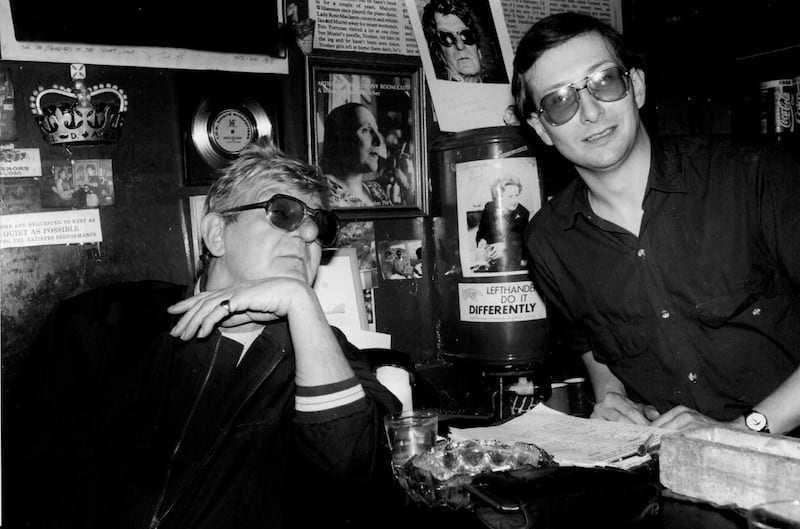
When I arrived at South Kensington tube station I saw the photo booth. Bacon was a devotee of the automatic photo booth, a cheap alternative to a formal photo-shoot. In the booth, he adopted whatever attitudes and faces he pleased, rarely smiling for the camera. He would then use the images to paint from. On the morning of his exhibition at the Tate Gallery, now called Tate Britain, in May 1985, I called Francis to ask if I could get a photograph of himself on the steps of the Tate. He thought that a good idea and told me he would arrive about 2pm with friends. Francis arrived on time with his best friends Denis Wirth-Miller and Richard Chopping. I got my exclusive shot of Bacon outside this illustrious building that I had first set foot in over 50 years ago, and most recently in 2019, to see the spectacular exhibition of photographs by Don McCullin whose photography took over two floors of the building.
The reputation of Francis Bacon has not diminished in the 30 years since his death; those who knew him have
Soho in the early 1950s and 1960s was a place of character and above all characters. The only unforgivable sin was to be boring. A bohemian quarter with its clubs and pubs, coffee houses and strip-joints attracting the rich, the poor, the infamous, the deluded. From Bacon to Beckett, William Burroughs, Dylan Thomas and Brendan Behan, all were fuelled by its hedonistic atmosphere. Before the Covid-19 lockdown, I walked down Dean Street, passing the now closed Colony Room where once I heard Bacon’s cry of champagne for your real friends, real pain for your sham friends, his favourite Irish toast displayed with an icy ceremonious politeness.
Since his death in Madrid on April 28th, 1992, aged 82, the glory days of Soho died with him. Happily, Lesley Lewis is still at the French House, Norman Balon who called last orders at the Coach and Horses, retired some years and in his late 90s is tending his roses. The reputation of Francis Bacon has not diminished in the 30 years since his death; those who knew him have.
The story of Soho and Francis Bacon has yet to be told. I was privileged to have had a rare glimpse into the world of Bacon. I did have an exhibition of Bacon, Beckett and Burroughs at the October Gallery, London, in February 1990. Like Beckett, the more Bacon hides himself, the more he reveals himself.
